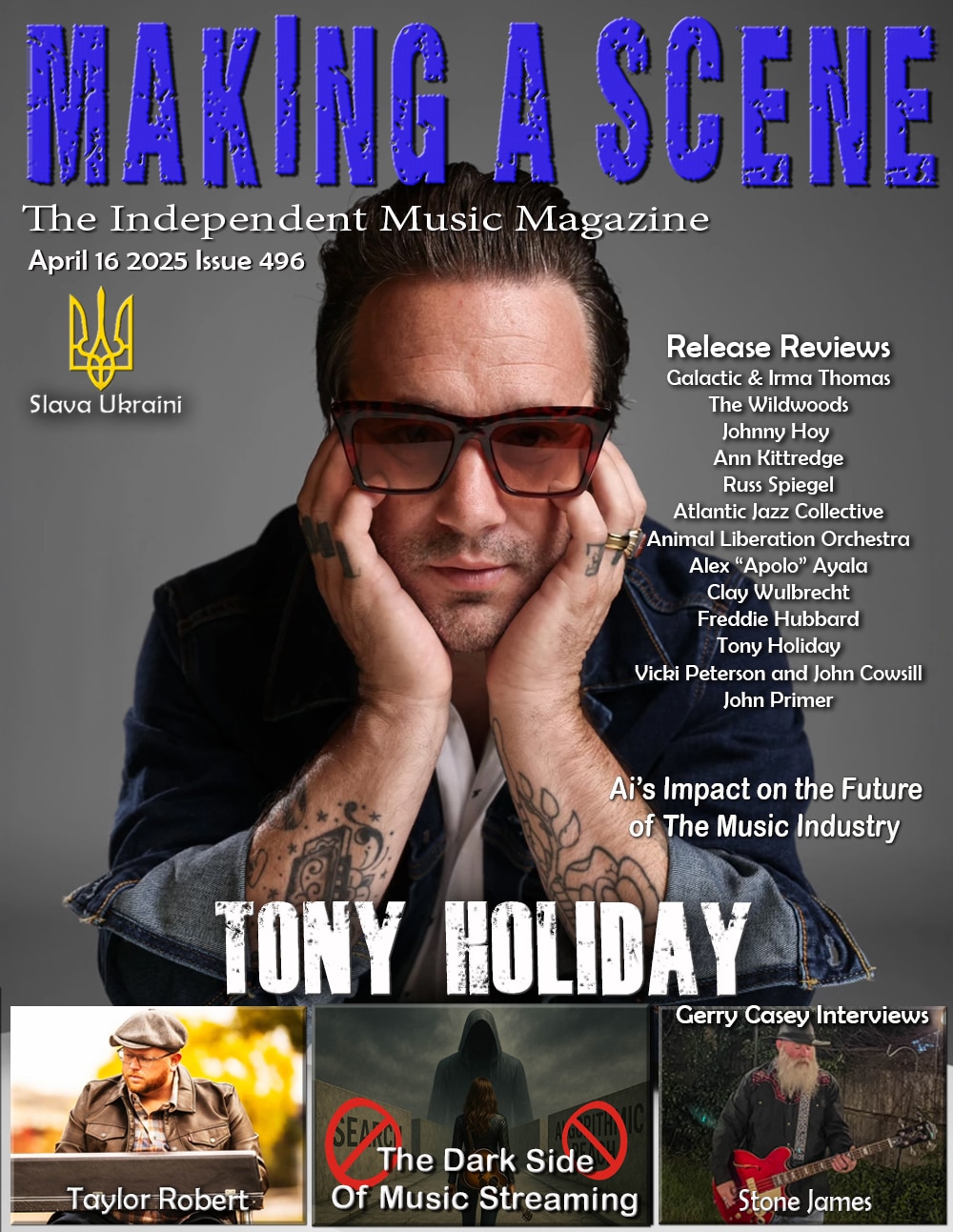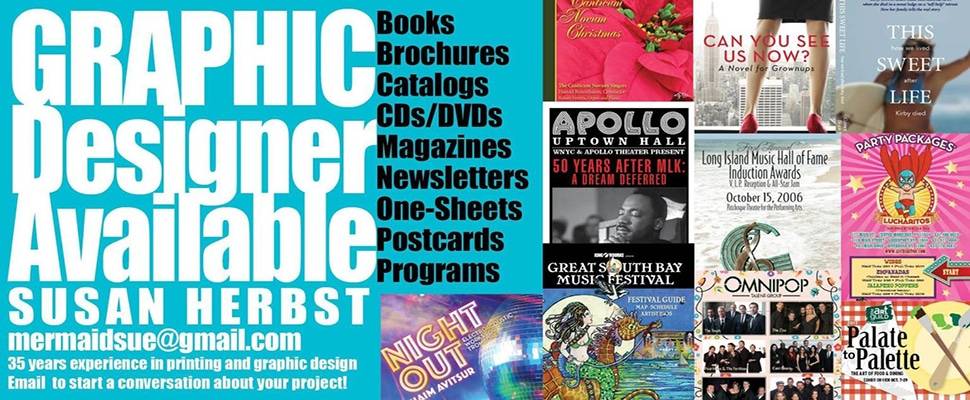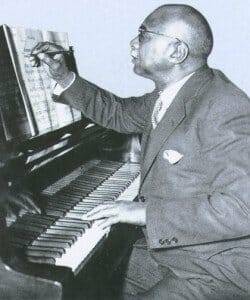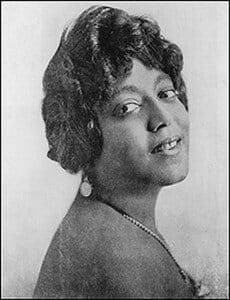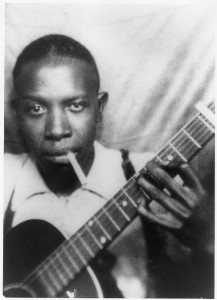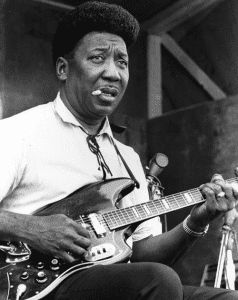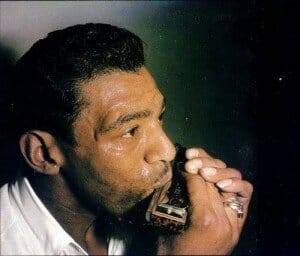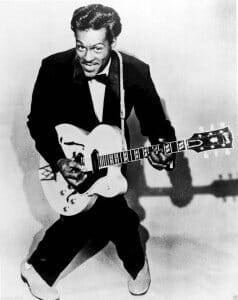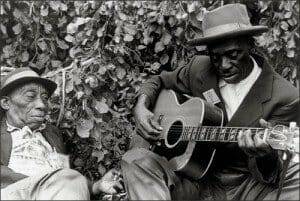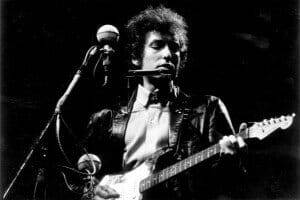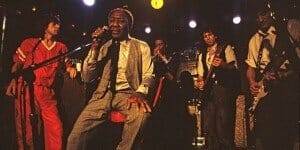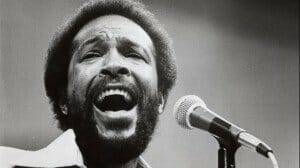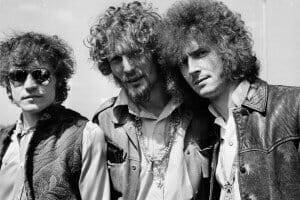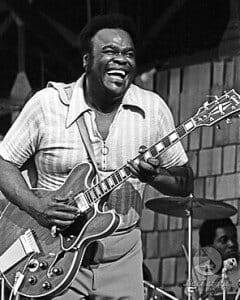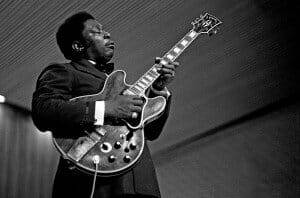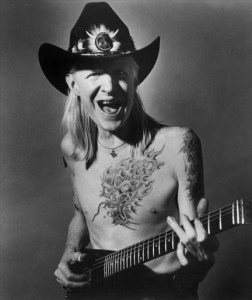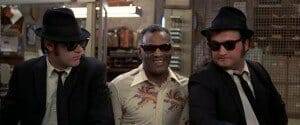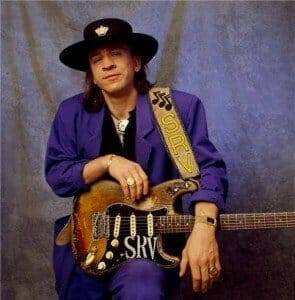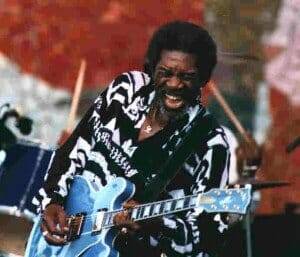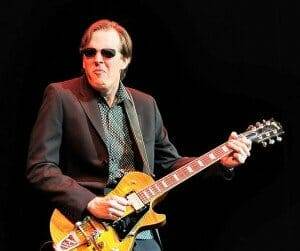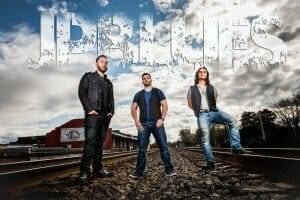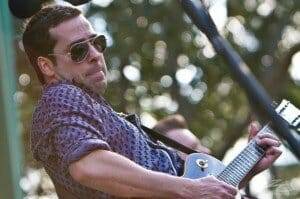A Brief History of the Blues.
A Brief History of the Blues
A Brief History of the Blues in Song! by Richard Lhommedieu on Mixcloud
Listen to the history of the blues with over 50 songs, progressing from the beginning of the blues and ending with some of the new hot artists of today!
The Beginnings
Even though the origins of the blues is widely recognized as dating back to the early days of slavery, the first published work that attempted to archive the music of the slaves was “Slave Songs of the United States” Published in 1867. But, it was not until the early 1900’s when Scott Joplin published Maple Leaf Rag and Victor Records recorded “Camp Meeting Shouts” in 1902 did the blues really start to surface as a musical art form. In 1903 W.C. Handy, a trained musicians, came across a bluesman playing a guitar, using a knife as a slide, in a train station in Mississippi and for some reason it really intrigued him. From this chance encounter, W.C. Handy started to travel and seek out rural musicians, he would listen to their music and because of his perfect recollection, he transcribed what they played onto paper. Handy once wrote of these blues Musicians “Surrounded by crowds of country folks, they would pour their hearts out in song…They earned their living by selling their own songs .. “ballets” as they called them and I’m ready to say in their behalf that seldom did their creations lack imagination.” In 1912 W.C Handy started to publish what he called “Blues” songs including his own “Memphis Blues”. These early blues songs were about the condition of slavery, and the post Civil War treatment of the former slaves. They wrote what they knew, and chronicled their story.
The Roaring 20’s
By 1920, the African American community started to become a market in itself for recorded music., and Mamie Smith records a song called “Crazy Blues” for Okeh Records, and it becomes the first “Blues” hit and marks the beginning of the business of selling music to the growing African American community as what we now know as “Race Records”. In 1923 artists like Bessie Smith and Ma Rainey are being recorded and become big money makers for the producers of these race record companies. It was also in 1923 that Ralph Peer, an A&R man for Okeh and Victor Records starts to make field recordings in Atlanta Georgia and throughout the south, these recordings mark the debut of “Folk Blues” and what later would become “Country Music” (Yes, Country Music and Blues had the same roots). It was in the 1920’s that Jazz, Ragtime and blues started to gain popularity and the first “Stars” of the genre were emerging included Big Bill Broonzy, Son House, Blind Lemon Jefferson, Charley Patton , Willie Brown, Mississippi John Hurt, etc. They would travel throughout the south and would perform in impromptu Juke joints setup throughout the cotton fields of the south. They would sing about the condition of the African American community as they dealt working as Share Croppers.
The Great Depression and the 30’s
In 1934 Alan Lomax came across and recorded an inmate in Angola Prison farm in Louisiana who called himself Leadbelly. As the legend goes, Leadbelly would get himself paroled time and again because of his talent as a songwriter and blues musician. This was the same year that Ella Fitzgerald made her singing debut at the age of 17 at the Apollo Theater in Harlem NY. In 1936 Robert Johnson recorded his first recordings in San Antonio, Texas and one year later he recorded his last recordings in Dallas. These folk blues musicians of the 1920’s and 1930’s are what we refer to the “Delta Blues” and “Piedmont Blues” artists. I would like to refer to these Blues musicians as the “First Generation” musicians of modern blues. Throughout the 20’s and 30’s the blues musicians were singing about their experiences as sharecroppers in the Jim Crow south. It was their way of relating a common experience to others in the community.
It was also in the 1930’s that Charlie Christian popularized the single note solos on the guitar. This was the forerunner of electric guitar solos and ushered in the era of Bop. During these hard times, bluesman “Georgia Tom” Dorsey found religion and was immediately drawn to the gospel music of the black congregations. He became the first publisher of black gospel music.
As the jobs started to dry up in the fields, and machines started doing a lot of the work, the blues musicians started to travel north in search of jobs. Memphis, Chicago, St Louis, New York all took in these musicians and the urban setting started to change how and where the music was being made. With each city a new distinctive type of blues was being born. Louis Jordan created “Jump Blues” one of the forerunners of rock and roll. Chicago Blues, St Louis Blues, Memphis Blues, Juke Joints, Street corners and house concerts within the community became the venues of choice and the songs now reflected the new reality these musicians faced. Drugs, alcohol, slum living, loose women all started to inspired the music. The experiences that each of these musicians had in each of the different cities and jobs that were available in those cities changed the music and gave its own distinctive sound.
World War 2 Years of the 40’s and Urban Blues
This was the era of the big bands, where the blues influences were seen in the Jazz musicians and band leaders. Count Basie, Glenn Miller, Louis Armstrong, Jimmy Rushing took Jump blues and evolved it into boogie-woogie. This music dominated the early 1940s and throughout World War II. It was also during this era some new urban blues musicians were making their mark on the music. Tampa Red, Bill Bill Broonzy Pine top Perkins, Earl Hines, Professor Longhair, etc, were all adapting to their new realities and making music to reflect it. Over on the west coast, Texas born bluesman T-Bone Walker was helping develop the West Coast Blues sound. It was in 1946 that Muddy Waters picked up the Electric guitar and added drums and a Double bass. A year later in 1947 he recorded his first “Electric” blues session “I can’t be satisfied” solidifying Chicago as the center of the Electric blues. He had taken the Mississippi Delta blues and the Piedmont blues style and played them with electric guitars, drums and bass. He started to write more material, working with what he knew, his truth, creating a brand new sound. It was raw, it was vibrant and it spoke to the community as being real and it was destined to change the world. At the same time T-Bone Walker recorded his first electric version of “Call it Stormy Monday”. The electric blues were now part of the blues landscape. Ironically, no one complained.
The 1950’s electric blues and rock and roll!
The transition from the fields of the south to the urban sounds had been progressing over the last 20 years. After World War II, there was a huge influx of African American population into the cities of the north. The “Race Record” companies of the 20’s and 30’s now became the Rhythm and Blues . The Electric blues began to become popular throughout the northern cities each giving it’s own spin on the sound. Chicago, Memphis, St Louis, and Detroit all started to create blues with electric guitars, bass, drums and harmonica’s played through a guitar amp by such artists as Little Walter, Sonny Boy Williamson and Sonny Terry. It was a new sound that quickly gained popularity. Most of the blues artists in the Chicago blues sound were on Chess Records; Willie Dixon, Howlin Wolf, Muddy Waters and Jimmy Reed, etc. In Memphis Sam Phillips was recording BB King
and Howlin Wolf (before he moved to Chicago). Though successful in their own market, very little attention was being paid to them by the white mainstream market. Until Sam Phillips decided to get a white singer to sing blues songs. In 1954 he releases Elvis Presley’s version of Blues singer Arthur Crudup’s “That’s Alright”. (It was not until the 1960’s before Crudup saw a dime of royalties from the song). This began the era of Rock and Roll, following Elvis Sam Phillips added Jerry Lee Lewis with his Jump piano style and the rest, well , is history. In 1955 Chess was looking for a new artist because the blues market was dwindling. He recorded Chuck Berry singing a version of a Bob Wills country song “ida Red” which was changed to “Maybellene”. That song sold over 1 million copies and reached #1 on the Billboads Top 100 Rhythm and Blues Charts. If you think about it, Rock and Roll was a mixture of white country singers recording blues songs and Black Blues artists recording country songs. But, these were lean years for most Blues musicians, though their sound and oft times their songs were being recorded by white singers and groups; they rarely saw a dime in royalties. Many of them had to go back into the job market to earn a living.
In 1957 Buddy Guy steps off the train in Chicago with nothing more than a guitar in his hand.
The 1960’s The British are coming
The Newport folk festival was formed in 1959 and was instrumental in the rediscovery of the Delta/Piedmont blues players. Many of the folk blues artists of the 20’s and 30’s had faded into obscurity, but in the early 60’s there was an effort by some to find them. Mississippi John Hurt was presumed to have been dead, but he was found in 1963, in the same town he lived in when he was recording back in the 1930’s. Skip James had not performed for over 30 years and was found in a hospital in Tunica Mississippi and brought out of retirement. Son House was living in Rochester NY and was totally unaware that his music was being revived by the folk boom of the early 60’s. He was found by Dick Waterhouse, Nick Perls and Phil Spiro and brought out of retirement to perform at the Newport Folk Festival. Many of the blues artists of the 20’s, 30,’s, 40’s and
even the 50’s were starting to be rediscovered by this hard core group of folk revivalists. Howlin Wolf, John Lee Hooker, Memphis Slim, Lightnin Hopkins found a home on the Newport Folk Festival stage as well as finding a fan base in Europe. Some were pulled from obscurity to the limelight they never knew they had. Then in 1965 Bob Dylan hit the stage and went electric with a blues rock set and was booed off the stage and labeled a sell out by the folk movement. This was the beginning of the “Blues Purists” Movement. This was originally kept to the folk blues or country blues genre and barely tolerated the electric blues. Even though for Dylan it was a huge commercial and critical success.
In the meantime, overseas young British musicians living near the port cities like Liverpool and Southampton, were getting their hands on the American Race Records and the Rhythm and Blues of Chess and Sun records and they were eating it up. But if one thing marked England, at that time, it was a respect for American music. Yes, for Rock and Roll — but also for the Blues tradition. Artists who had never left the States came over to England, France, and Germany and found themselves welcomed and celebrated. American Bluesmen like Big Bill Broonzy found they could have careers in Europe when in the States they had little going on.
Starting in 1962, the European interest in American Blues was fed by the American Folk Blues Festival, an annual touring festival that brought Muddy Waters, Howlin’ Wolf, Sonny Boy Williamson, and many more to European audiences intermittently over the next few decades. In the audience for those first shows were future members of the Rolling Stones, Led Zeppelin, and other major acts of the 1960s and 1970s. The English youth loved it so much they started to cover the blues and write songs in the blues style. The Rolling Stones, who formed in 1962 took their name from a Muddy Waters song, the Beatles, The Kinks, The Yardbirds, The Spencer Davis Group, John Mayall and the BLuesbreakers, etc. the first wave of the British invasion were bringing the Chicago blues back to the United States and feeding it back to the mainstream white America, who had little to no exposure to this music. Many of these acts brought the blues artists along to open for them and were responsible for introducing their music to the mainstream music market both in the US and overseas. I suspect that many of those who now consider blues their genre of choice were exposed to it during this era.
At the same time the African American music buyers were abandoning the blues, and moving towards a new incarnation of the music called Soul or the “Motown” sound coming out of Detroit. The new sound was soulful singer based. With artists like Marvin Gaye, Stevie Wonder and Gladys Knight to name a few, Berry Gordy had 79 Billboard top ten his between 1960 and 1969! This new music was heavily influenced by blues and blues musicians, but with a new feel and take on the music. The now famous “Funk Brothers” , the house band for Motown Records and many people credit for “The Motown Sound” , were session musicians who took a blues foundation and created this new sound from it. They smoothed it out and gave it a more “Pop” feel. While in Memphis Stax Records signs a distribution deal with Atlanta Records, and was redefining the Memphis blues sound with artists like Wilson Picket, Otis Redding, Booker T and the MG’s, Albert King, Issac Hayes to name just a few.
By the middle of the 1960’s the British invasion was in full swing. Eric Clapton formed the group Cream in 1966, Led Zepplin recorded an album containing songs written by Willie Dixon and T-Bone Walker. There were some American artists that even went overseas only to come back as part of this movement, such as Jimi Hendrix. Blues had finally hit the mainstream, and those bluesmen that were still playing enjoyed the admiration and respect (even though they still got cheated at every turn, IE: Willie Dixon had to sue Led Zepplin for $1Million for their first album). Throughout the late 60’s and the early 70’s the music grew with each new band that used the music as it’s foundation.
It was also these British musicians that would have on their tour many blues musicians exposing them to a new mainstream audience that they would never have had the opportunity to be exposed to. Freddy King was often part of tours with Eric Clapton. BB King, Albert King, Muddy Waters were all heroes and mentors to these musicians. The felt the truth in their music and they respected their truth and were determined to continue on the tradition they started. It was also the time when the fanbase for the blues took a dramatic shift. . In an interview with Chicago blues musician Dave Specter he recalls a recanting of a conversation, during this time in blues history, between BB King and Buddy Guy on how the Blues has lost favor with the African American communities and it seems that their concerts were mainly white rock fans. They were grateful for their newfound success, but lamented that the African American community has largely left the blues behind them and much of the music was now being performed by white artists.
The 1970’s and the end of the Vietnam war
The early part of the 1970’s still saw a large influence of blues in popular music, bands like the Allman Brothers, Eric Clapton, Led Zepplin, John Mayall, BB King, Foghat, Humble Pie, Janis Joplin, Rolling Stones, Robin Trower, ZZ Top, Savoy Brown and so many more that were recording old blues standards and writing new songs in the style of blues. It was also in 1970 that BB King had his first hit record with “The Thrill is Gone” , and it won him Grammy for best R&B Vocal Performance. This was the maturing of Blues and Blues Rock! As these new blues artists smoothed out some of the rough edges of the previous decade, blues-rock would become much more commercial during the 1970s, with bands moving from small clubs to massive stadiums. Again coming along for the ride many of the “Blues Rock” artists would bring the musicians that influenced them on the road with them. The three Kings (BB, Albert and Freddy), Muddy Waters,
Howlin Wolf, etc., all benefited, at least in the respect of gaining a fanbase, from the popularity of Blues Rock of the early 70’s. The results was many aspiring musicians and music fans started to look back at the influences of these blues rock musicians, rediscovering the blues of the 20’s 30’s, 40’s and 50’s. Reading the liner notes on the albums and seeking out information on who was Willie Dixon, who is this Muddy Waters, etc. The popularity of blues rock in the early 70’s can be linked directly to a resurgence of the blues genre. I honestly believe had it not been for the British invasion and Blues Rock’s popularity of the early 1970’s, blues might have faded into obscurity. But, because of the popularity of these artists and how they transformed the Electric Blues, they created a conduit to the re-discovery of blues all the way back to the 1920’s.
It was also during the early 1970’s the Texas Blues emerged with artists like Johnny Winter and ZZ Top. The Texas blues movement was strongly influenced by British blues rock Many of these artists started their playing their music in the early 70’s but did not reach international success until the next decade.
By the middle of the 1970’s though blues. Texas Blues, Rock and blues rock started to wane in popularity. The new music is based on a danceable form of blues called “Funk” which developed from the Detroit sound of the early to mid 60’s. This dance music soon became known as Disco! During this time blues artists once again found it hard to keep money in their pockets. Artists like BB King hit the road and toured extensively to keep liquid. Fortunately there was still a market for the blues on the European circuit. The Disco era was a lean era for many musicians, clubs found it cheaper to hire a DJ to play recorded tracks then have a live band in to perform.
1980’s The Blues Brothers and Texas Blues
In 1980 the blues foundation had established their “Blues Hall of Fame” , inducting a long list of established blues artists, In the same year, Dan Aykroyd and John Belushi released the Blues Brothers to critical acclaim. The band in the movie was made up of a who’s who of blues musicians. Steve Cropper, Donald Duck Dunn, Matt Guitar Murphy, Blue Lou Marini, Alan Rubin, Tom Malone and Willie Hall made up the Blues Brothers band along with Aykroyd and Belushi. But, they didn’t stop there, also appearing in the movie was James Brown, Aretha Franklin, Ray Charles, Cab Calloway, Chaka Khan, John Lee Hooker, Walter Horton, Pinetop Perkins, Willie Big Eyes Smith, Luther “Guitar Jr” Johnson, Calvin Jones and even had Joe Walsh as a prisoner. This began a boom for the blues in the 1980’s which was furthered by the signing of Stevie Ray Vaughan to Epic Records in 1983. By June of 1983 Texas Flood was released and the new wave of Texas influenced blues was on the roll. George Thorogood,
Robert Cray, The Fabulous Thunderbirds, James Cotton, Lonnie Brooks, Lil Ed and the Blues Imperials, and the list goes on. Peaking through the Devo’s, and Cyndi Laupers (who started as a blues singer), were a wide collection of blues artists inspired by not only the masters but some of the Blues rock of the 60’s and 70’s. This was also the time period when the blues purists started to take control of the niche blues radio and publications. While Stevie Ray Vaughan, George Thorogood and crew were enjoying mainstream appeal, the blues purists were shunning them as not being real blues. Instead using college radio and small niche radio shows to play only blues from the 1920’s through the 1950’s, claiming that very little new music or musicians, was to be considered as blues. Not many people were paying them much attention, their market was very small and since there was a market in the mainstream for blues, nobody paid them any mind. Also while all this was going on, rap and Hip Hop were on the rise. This music has it’s roots in NY with Funk and Soul as the prime inspiration. Blues fans would you would seem to have a natural understanding of rap, considering John Lee Hooker’s “Boogie Chillun” is a classic. As for the content, it is true that a lot of rap is violent and misogynist, but we have heard Robert Johnson singing, “I’m gonna beat my woman till I’m satisfied,”. A lot of rap might be dismissed as over-the-top boasts about how tough the rapper is, but how different are they from “Hoochie Coochie Man”? Indeed, as many historians have pointed out, there are examples of rap in the work of artists as varied as the Memphis Jug Band, the Golden Gate Quartet, and Bo Diddley. The Connection between Blues and Rap/Hip Hop might not be directly apparent, but if you look at it there is some very definite lines of influence.
The 1990’s Stevie Ray is gone but the music lives
By the time the 1990’s came around Hip Hop had hit the mainstream, and Stevie Ray Vaughan had died in a plane crash in 1990. But, even after his death during the 1990’s he had 3 #1 Albums. In addition to Stevie Ray, another blues artist, Eric Clapton returns to the blues roots with two ground breaking albums “Unplugged” and “From the Cradle”. It was also during the 1990’s that we saw the rise of Kenny Wayne Shepard, Johnny Lang, Johnnie Taylor, Keb Mo, Jeff Healey, Coco Montoya, Luther Allison, Susan Tedeschi, Charlie Musselwhite, Lucky Peterson, Kenny Neal to name a few. By the late 90’s, with the exception of a very few artists, most blues was being nurtured by smaller labels that believe in the genre. Alligator, Ruf, Severn, Chess(MCA), Delmark, Northern Blues, Fat Possum and Vanguard embraced the artists that were left in the genre. But, since they no longer had the ear of the mainstream music outlets, they had to depend on the very blues purists who now controlled the blues radio on college stations and small niche blues radio shows. These labels felt they had to cater to what market they had and those who controlled the gates to that market. It became a fine dance between the labels, the artists and the DJ’s that controlled the Blues Radio shows. There were many that would not play anyone that was not playing “Traditional” blues. Though there is not a single definition of what is blues and it became fractured into many sub genres, Country Blues, Acoustic Blues, Chicago Blues, Blues Rock, etc. The irony is the people who were trying to define the genre, and deciding who is and who is not blues, had little to no direct connection to the music or it’s roots. Many new artists were not embraced by these DJs and should they have any commercial success they were outright left in the cold by them.
The new Century 2000 and beyond
As we reach into the new century, blues is under a tight reign of a small group of DJ’s, writers and publishers who are intent to keep purity in the genre. A few of the artists from the 80’s were touring and keeping alive doing Blues Festivals and some blues clubs throughout the US and Europe. A new generation of blues artists started to emerge to a general lack of support from these “Gate Keepers”. Most notable to me is Joe Bonamassa. I remember seeing Joe playing some small festivals, working for little money and working hard to make it in a genre that would not accept him. Fortunately for him, his manager (J&R Adventures) was able to buck the establishment, creating their own label and established a significant commercial success for himself. It’s just a shame that he was not embraced and supported by the blues community, he could have brought the genre along with him. Let’s be honest, to shun any commercial success in the name of “The Music” is a pretty immature view of the music business. Every musician and record company wants commercial success, if you think any different then you have a very naive view of the business. Let’s fact it, they don’t call it Music Business for nothing!
Reeses Peanut Butter Cups using Blues to sell you candy!
As we move through the new century, there are many emerging artists that are using blues as their foundation. With the advent of internet radio, facebook and youtube the DJs and writers that once controlled what is or is not considered blues are slowly losing their hold on the genre. New artists are hitting the road and working the festivals and remaining blues clubs and they are using social media to get their music out. This is not to say that the purists are not trying to fight back, and keep the genre restricted to “Their” view of what is and is not blues, but the tide is turning against them. It’s time we adopt a better attitude towards the definition of the blues and start using phrases like “Yep, that’s blues” or “Yep that came from the Blues” and embrace ALL the music as part of the Blues Family. How powerful would Blues become if we educated the mainstream as to where their favorite music came from.
I also find it interesting how advertising, Television and movies are using “Blues” as a basis of creating audio landscapes to encapsulate their visual messages. The name blues however is still having PR problems as being outdated and rigid. I was once at a show with a current blues artist, and I approached someone at the pool table who was watching the band with intensity. I asked him “What do you think of the band?”, his response encapsulated my point. He responded “I don’t like Blues, but I do like this”. Most people have gotten such a bad impression of what blues is they no longer associate the name with the music. Blues as a music is viable and is being created by new musicians.
New Blues act “Vintage Trouble” selling you Cars!
Bands like Vintage Trouble, Samantha Fish, Warren Haynes, JPBlues, Joe Bonamassa, Alexis P Suter, Joel DaSilva, Brent Johnson, Dave Specter, Royal Southern Brotherhood and their respective members (Mike Zito, Cyril Neville, Yonrico Scott, Devon Allman, Charlie Wooton), Jarekus Singleton, Mikey Junior, Jim Byrnes, Kenny “Blues Boss” Wayne, JP Soars, Brandon Santini, Fo’Reel, Georgia Flood, Hadden Sayers, Damon Fowler, Toby Walker, John Ginty, Little G Weevil, Laith Al-Saadi, Nick Moss, Sean Chambers, Albert Castiglia, Selwyn Birchwood, Todd Wolfe, Victor Wainwright, Annika Chambers, Rachelle Coba, Lucky Peterson, Bernard Allison, Big Bill and Mud Morganfield, Joe Louis Walker, JJ Grey and Mofro, Derek Trucks, Susan Tedeschi, Damon Fowler, Rod Piazza, Popa Chubby, Too Slim, Watermelon Slim, Coco Montoya, Dani Wilde, Joanne Shaw Taylor, Oli Brown, Sue Foley, Voo Davis , Geoff Achinson, Bryan Lee, Harpdog Brown, Tinsley Ellis, Ronnie Baker Brooks, Dave Keller, Dave Keyes, EG Kight, Lisa Bailes, Delbert McClinton, Shaun Murphy, John Mayall, Savoy Brown, Dana Fuchs, Homemade Jamz Band, Trampled Under Foot, Sena Ehrhardt, Chantel McGregor and the list goes on
and on. All of them writing and creating new music, and all of it is blues, and all of them are out there touring and trying to bring their blues to whoever will listen The internet is abound with Blues radio podcasts and Internet radio shows, done by people with passion for the music and the musicians that are out there “Keeping the Blues Alive”. Let’s face it, we will always have Robert Johnson, Muddy Waters, Howlin Wolf, but they are not touring and making new music. IT’s these new artists that are keeping the light of blue alive. In my article “State of the Blues” I make some interesting parallels to the Country music industry. Think about it, if the blues community took an inclusive approach to blues and supported the artists that are making the music today, it might just make it back into the mainstream as a commercially viable success. I know there are people that would not like to see that happen, well to them I say, Time for you to step aside.
We need to expand our view of what blues is, or at the very least define it with paths to all it’s versions and “influenced by” intact, and follow in the footsteps of those who came before. Robert Johnson did something new with the music from the fields. Charlie Christian developed the guitar solo and Muddy Waters took the delta blues and electrified it. In the 1950’s blues evolved differently in the urban areas like Chicago, Detroit, Memphis and St. Louis. Chuck Berry took a country song and blues’d it up to create Rock and Roll. The British invasion brought the blues into the mainstream music market and inspired the Texas blues. As blues moved through the last 150 years, it has evolved, and stayed relevant because it was based on truth.
Any definition of Blues in the future should at the very least encompass and embrace the paths to all the music that was created from her. To do so is just good business! We should be showcasing the paths from all popular music and how it traces back to the root music that we all hold so dear. The potential is enormous! Think about it, if you took ANY popular artist and ask them who their influence was, go to that person and find their influence, and followed that path to it’s conclusion, you will ALWAYS end up on the same porch in Mississippi. That is a strong concept, one that needs to be the prevailing view of what is and is not blues!
For me I define blues as music that has Truth and Authenticity to it and communicates to me emotionally through sound and lyrics.
And now it’s time for the blues to make its move into the new century, the question is will you be one that helps it move forward or are you going to be one of those “Purists” who believe that blues should be performed as a “Tribute” act doing music of the 20’s through the 50’s, and stop there. If you are one that believes that blues should be allowed to evolve and grow, then find an artist that moves you, they are out there touring right now! Head to their website, go to their shows, buy their music and support them. Join your local Blues Society, encourage them to support not only their local blues musicians, but also the touring blues artists. There is no shortage of really great blues musicians, locally, regionally, nationally and internationally. Ruf Records, Alligator, Blind Pig, Blind Raccoon, Midnight Circus Records, Delmark, Blues Leaf and a huge amount of independent blues labels all releasing great music from great blues artists. Take the time to discover, share and support them!
THAT is how you “Keep the Blues Alive”
Discover more from Making A Scene!
Subscribe to get the latest posts sent to your email.





































